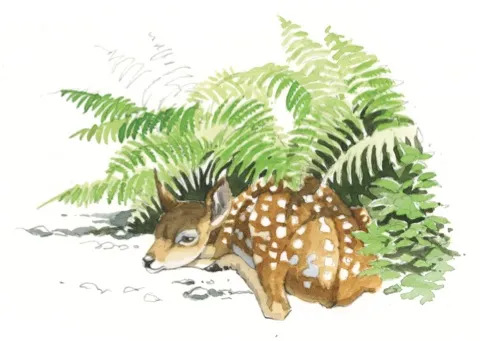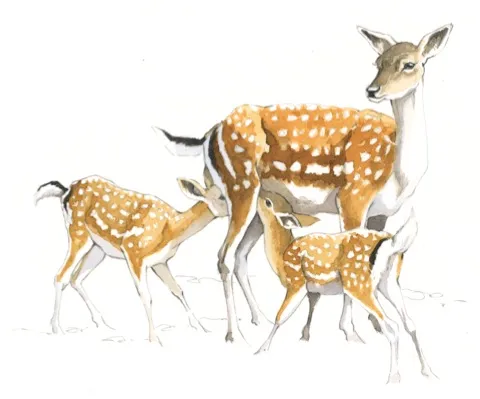Discover all you need to know about the parenting skills of the doting fallow deer. Fallow deer are common throughout lowland Britain, but it is easiest to observe their behaviour in deer parks.
Most fawns are born in June – keep an eye out for does that are restless, alternately lying down and standing up because they could be about to give birth.
Finally, when the doe is ready, she will lie on her side.

The mother hides her newborn fawn in dense cover such as bracken. If you spot one, leave well alone.© Federico GemmaGuard duty
For the first few days, the fawn lies hidden and immobile in dense cover such as patches of bracken.
The doe will be nearby, often standing alone or with last year’s offspring.
If you get too close, she will trot over and bark at you; dogs pose a bigger threat and she will follow them for some distance with a characteristic, stiff-legged walk.
Eat and excrete
A doe suckles her fawn roughly every four hours, and bleats to call it to her.
After feeding, mother and offspring face in opposite directions. The doe then licks her fawn’s anal region to stimulate it to urinate and defecate.
Stepping out
After a few days, the fawn starts to follow its mother, but it may be a while before she rejoins the herd. In midsummer, a few does often look after a large crèche of fawns.

A fallow doe feeding two fawns is likely to be suckling a grandchild in addition to her own offspring. © Federico Gemma
Double trouble
You may see two fawns suckling from the same doe, particularly later in the summer.
However, twins are rare in fallow deer, so one of them is probably her grandchild.
Her own fawn feeds underneath her belly in the normal position, while the other one joins in from behind.
Find out more about the work of illustrator Federico Gemma.
